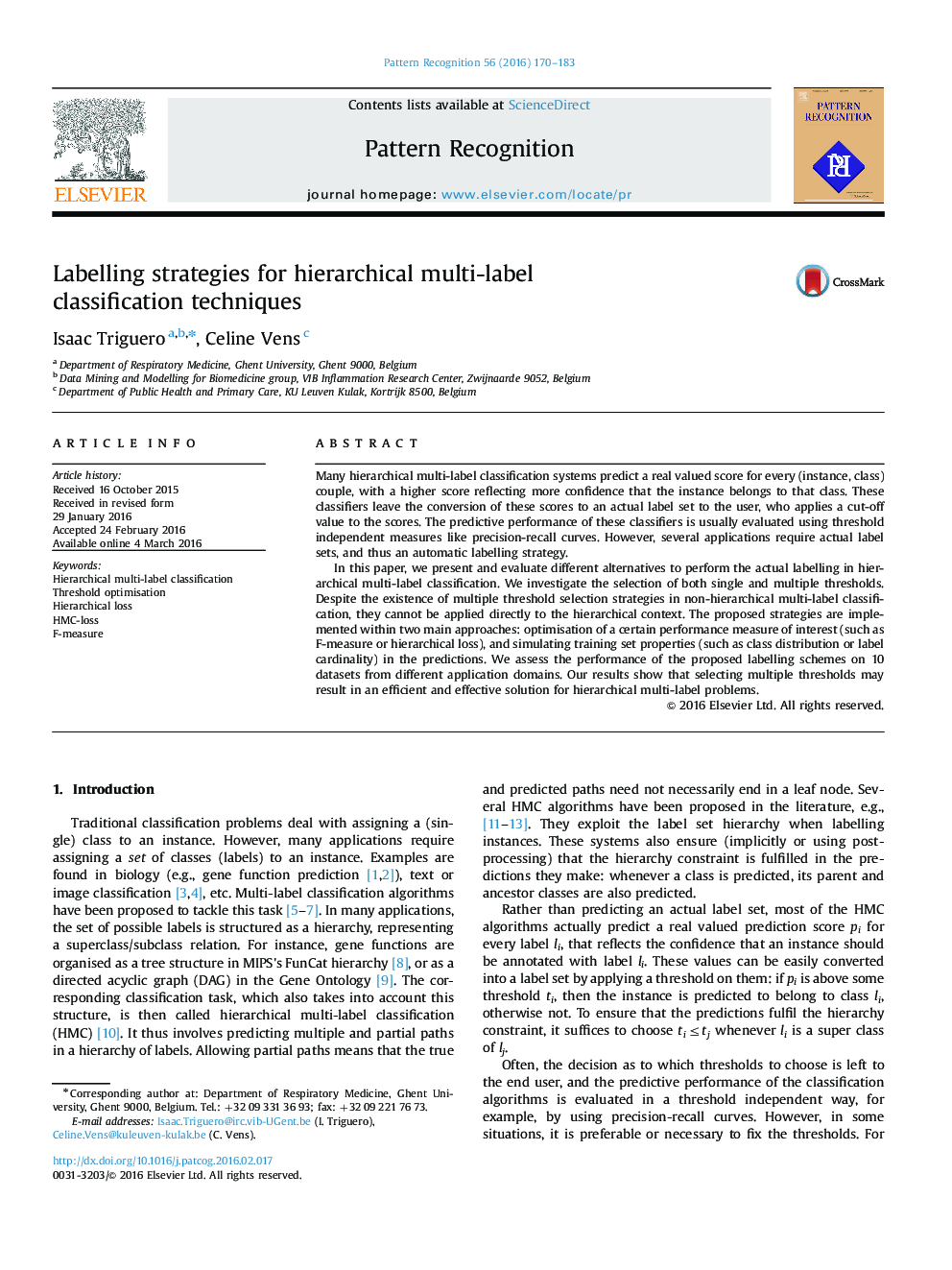| Article ID | Journal | Published Year | Pages | File Type |
|---|---|---|---|---|
| 533179 | Pattern Recognition | 2016 | 14 Pages |
•We select single or multiple thresholds for hierarchical multi-label classifiers.•Selecting multiple thresholds often yield better label sets in lesser time.•We show that optimising H-loss tends to favor empty label sets.•Multiple threshold selection is preferred for micro F-measure and HMC-loss.•Imitating training set properties is a competitive approach to optimise HMC-loss.
Many hierarchical multi-label classification systems predict a real valued score for every (instance, class) couple, with a higher score reflecting more confidence that the instance belongs to that class. These classifiers leave the conversion of these scores to an actual label set to the user, who applies a cut-off value to the scores. The predictive performance of these classifiers is usually evaluated using threshold independent measures like precision-recall curves. However, several applications require actual label sets, and thus an automatic labelling strategy.In this paper, we present and evaluate different alternatives to perform the actual labelling in hierarchical multi-label classification. We investigate the selection of both single and multiple thresholds. Despite the existence of multiple threshold selection strategies in non-hierarchical multi-label classification, they cannot be applied directly to the hierarchical context. The proposed strategies are implemented within two main approaches: optimisation of a certain performance measure of interest (such as F-measure or hierarchical loss), and simulating training set properties (such as class distribution or label cardinality) in the predictions. We assess the performance of the proposed labelling schemes on 10 datasets from different application domains. Our results show that selecting multiple thresholds may result in an efficient and effective solution for hierarchical multi-label problems.
